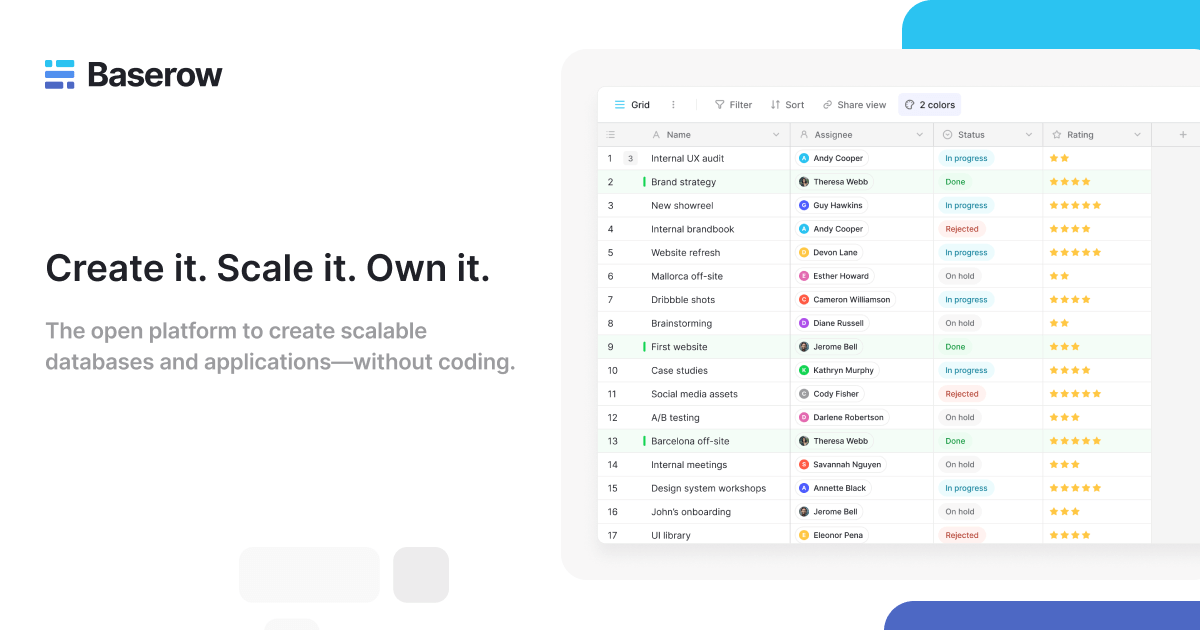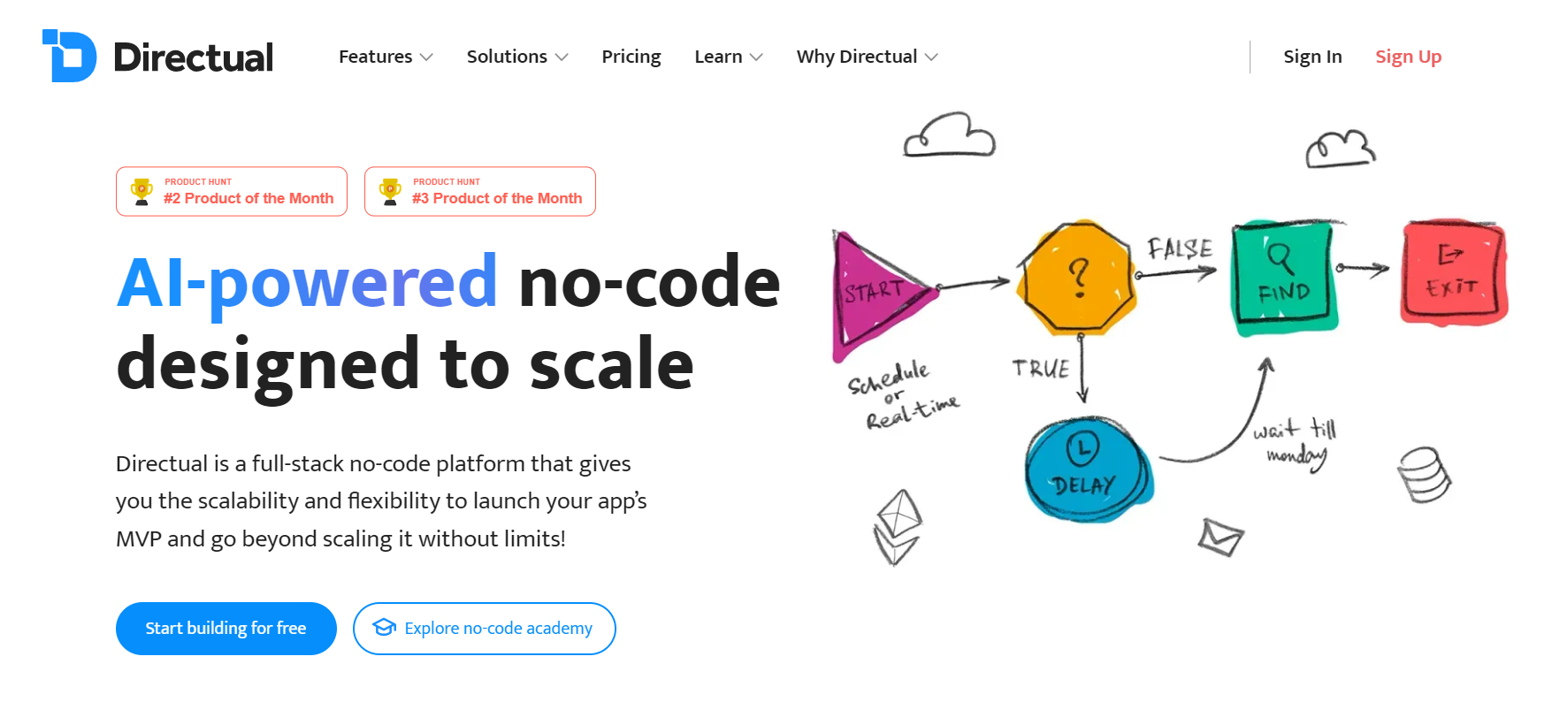Open the Power of No-Code for Open System Data Source Development
Open the Power of No-Code for Open System Data Source Development
Blog Article
Exploring the Benefits of Scalable Databases That Need No Coding Abilities for Efficient Data Management Solutions
The appearance of scalable data sources that remove the need for coding skills presents a transformative chance for companies seeking effective data management options. By allowing non-technical users to harness the power of data via intuitive user interfaces, these systems boost accessibility and foster collaboration throughout diverse groups. Their cost-effectiveness and flexibility to evolving organization requirements can substantially streamline functional procedures. As we consider the implications of such innovations, it comes to be critical to examine how they can improve the landscape of data management and drive lasting development in a competitive environment.
Enhanced Ease Of Access for Individuals
Enhanced ease of access for customers is a crucial element of scalable data sources, ensuring that information monitoring systems are instinctive and user-friendly. In a period where data-driven decisions are extremely important, ease of access allows a bigger series of customers, consisting of those without substantial technological competence, to engage with data source systems properly. This democratization of information accessibility helps with improved collaboration throughout departments, equipping employees to extract insights and make notified choices.
Easy to use interfaces, such as aesthetic information and drag-and-drop functions representation, streamline intricate information interactions. These enhancements decrease the understanding curve connected with typical database monitoring, enabling individuals to concentrate on leveraging information instead than coming to grips with technical complexities. In addition, scalable data sources typically include personalized dashboards and real-time analytics, supplying individuals with prompt understandings customized to their particular needs.

Cost-Effectiveness and Source Cost Savings
Effective information monitoring not just hinges on availability yet likewise on cost-effectiveness and source savings. Scalable data sources designed for individuals without coding skills significantly decrease economic worries typically connected with traditional data source monitoring systems. By getting rid of the requirement for specialized programs experience, companies can allot their sources more efficiently, concentrating funds on core business activities as opposed to comprehensive training or hiring proficient personnel.
In addition, these databases typically use cloud-based services, which additionally decrease costs connected to equipment and upkeep. Organizations can scale their data source solutions according to their demands, avoiding the expenses incurred from over-provisioning resources. This flexibility suggests services can adjust to altering demands without incurring unnecessary prices, causing considerable lasting financial savings.
In addition, straightforward interfaces streamline information entry and management processes, minimizing the time invested on administrative jobs. This efficiency translates into labor cost financial savings, enabling teams to focus on tactical initiatives instead of routine upkeep. Generally, adopting scalable databases that require no coding abilities promotes an extra affordable technique to information management, making it possible for organizations to maximize their sources while preserving high levels of operational effectiveness.
Improved Cooperation Throughout Teams

Additionally, scalable data sources facilitate seamless communication amongst team members. With user-friendly user interfaces that require no coding abilities, employees can easily produce, change, and share records or control panels tailored to their certain demands. This democratization of data equips non-technical customers to contribute understandings, boosting the collective setting.
Furthermore, these data sources sustain concurrent accessibility, allowing multiple customers to service the exact same dataset at the same time. This attribute boosts efficiency, as groups can participate in joint data analysis without the threat of version control issues. The capacity to leave notes or remarks straight within the database better advertises discussion and clarifies data interpretations.
Streamlined Information Monitoring Processes
In today's data-driven environment, organizations recognize the need of structured information management processes to maximize efficiency and precision. By leveraging scalable data sources that need no coding abilities, companies can simplify their data handling and lower the complexities commonly linked with traditional data source systems. This accessibility empowers non-technical customers to involve straight with data, helping with quicker decision-making and lowering reliance on specialized IT employees.
Structured information monitoring procedures boost operations by automating routine tasks such as data entry, recognition, and reporting. Automated data assimilation makes certain that information from different sources is accumulated effortlessly, getting rid of silos and fostering a linked sight of essential service metrics (no-code). In addition, user-friendly user interfaces allow personnel to manipulate information conveniently, enabling them to generate understandings that drive tactical initiatives without the requirement for considerable training.
This efficiency not just increases functional processes however also lessens the capacity for human mistake, ensuring that information stays precise and dependable. Eventually, streamlined information administration processes with scalable databases cause enhanced productivity, enabling organizations to focus on core tasks while making certain that their data administration methods are effective and effective.
Scalability for Growing Businesses

For broadening enterprises, the capacity to scale up or down is essential. A scalable data source can manage an influx of information generated from brand-new consumers, products, or solutions, ensuring that company procedures continue to be undisturbed. Moreover, these databases supply the capability to handle peak lots efficiently, which is crucial during durations of fast development or seasonal spikes.
Furthermore, several scalable data source remedies are designed with user-friendly interfaces that need no coding skills, empowering my latest blog post non-technical staff to handle information successfully (no-code). This democratization of information administration allows organizations to allot sources tactically and minimize dependence on specialized IT workers
Inevitably, taking on a scalable data source not just boosts functional performance yet likewise cultivates a setting where businesses can introduce and progress without the restrictions of typical database systems. This flexibility placements companies for long-term success in today's competitive landscape.
Verdict
In conclusion, scalable data sources that need no coding skills supply significant benefits for efficient data administration. By improving information administration procedures sites and using scalability for growing organizations, such options enable organizations to adapt to changing needs effectively.
Improved availability for customers is a critical element of scalable databases, making sure that data administration systems are user-friendly and easy to use.Easy to use user interfaces, such as aesthetic information and drag-and-drop features representation, simplify complex information interactions. On the whole, taking on scalable data sources that require no coding abilities promotes an extra cost-effective strategy to data monitoring, allowing organizations to optimize their resources while preserving high levels of functional effectiveness.
By leveraging scalable databases that call for no coding skills, organizations can simplify their information handling and reduce the intricacies generally linked with conventional data source systems - no-code.Streamlined data monitoring processes improve workflow by automating routine jobs such as information entrance, validation, and reporting
Report this page